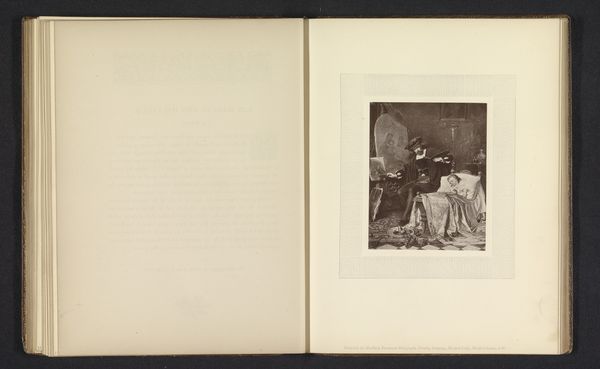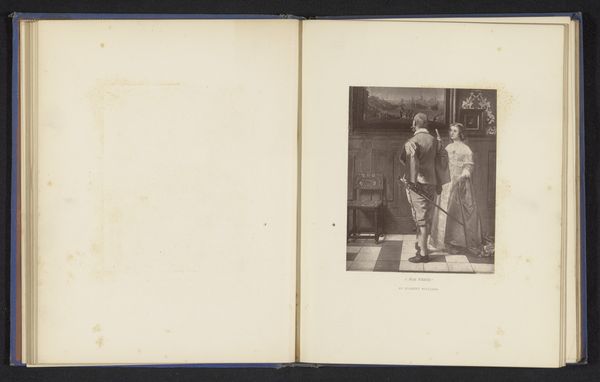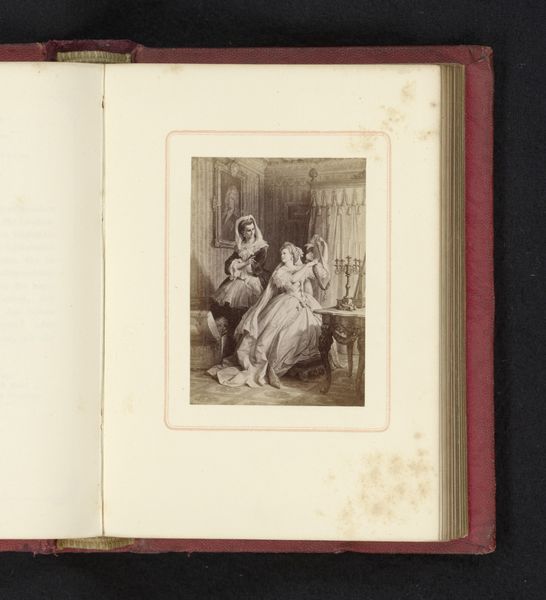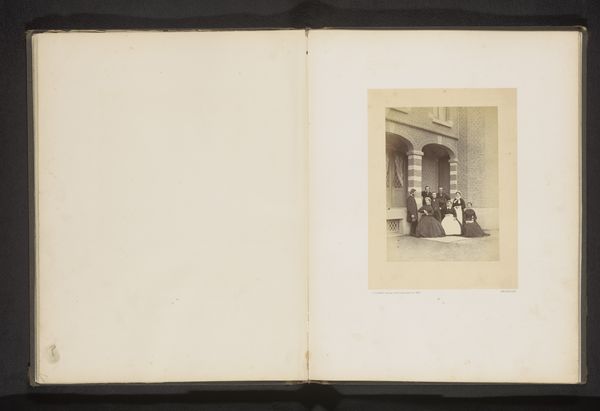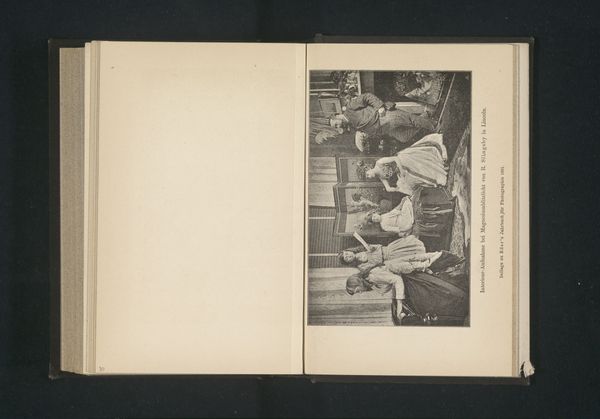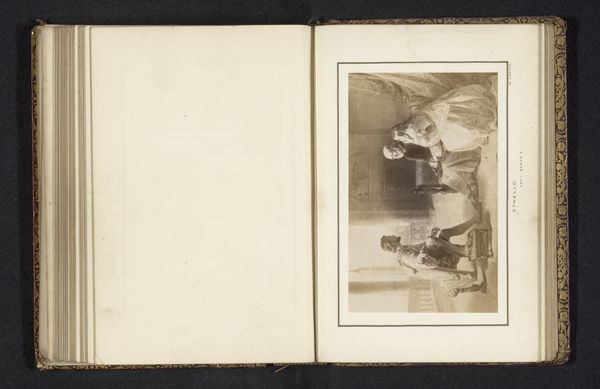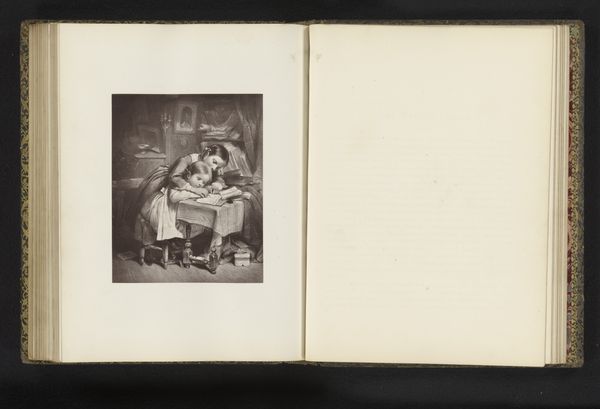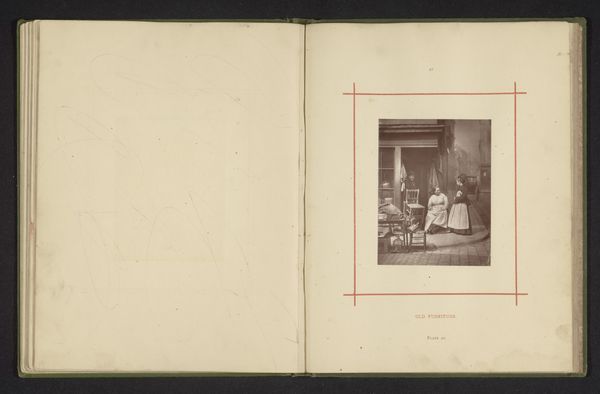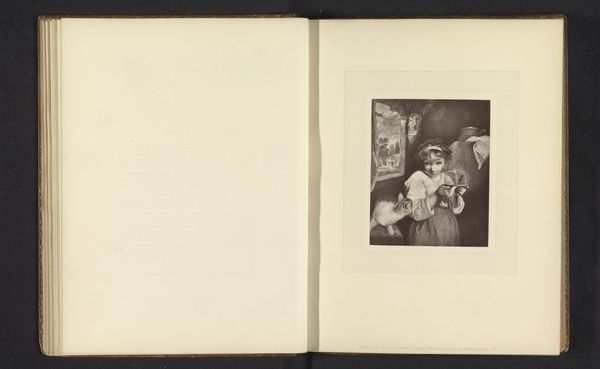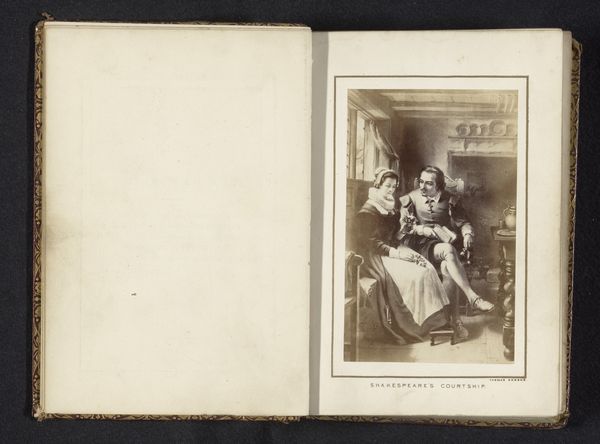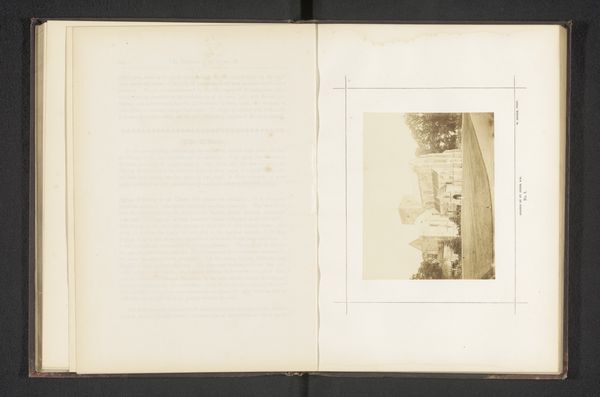
Reproductie van een schilderij met ruziënde kinderen aan tafel door Hugo Salmson before 1901
Dimensions: height 251 mm, width 235 mm
Copyright: Rijks Museum: Open Domain
Curator: This print is called "Reproductie van een schilderij met ruziënde kinderen aan tafel door Hugo Salmson," placing a copy of a painting depicting arguing children at a table created by Hugo Salmson within its pages, dating it before 1901. The medium here is intriguing: ink on paper. Editor: My first impression is one of domestic discord rendered in grayscale—the texture seems rough, almost urgent. You can feel the tension in the room despite the subdued palette. It almost resembles the "storming the Bastille" mentality, though this is with children arguing in a familial space. Curator: Exactly. Salmson, I think, captures something timeless. These children at the table—their struggle is representative of so much, isn't it? Consider, particularly in this reproduction made available through print, how this image might serve the function of normalizing certain aspects of childhood conflict, reflecting larger societal issues around the power dynamics. Editor: And think about the semiotics here. The table acts as both a meeting place and a battleground. What are they fighting over? Food? Territory? Love? These are archetypal squabbles mirrored in folklore and myth. Notice how Salmson positions the light; it falls almost brutally on the faces, heightening the discomfort. Curator: I'm drawn to consider how accessibility here, afforded through print and reproductions, plays out across different demographics. Who had access to imagery like this? Was it designed to encourage a sense of belonging in certain social spheres? Editor: Absolutely. And that monochrome treatment pulls it away from the specific—it could be anywhere, anytime, and yet rooted firmly in a cultural depiction. The gestures and postures of the children, however stylized or naturalistic, are instantly readable across cultures and through generations, I believe. There are familiar visual cues from different European movements and art periods, but they have come together and lost the initial meanings to portray one unique and new. Curator: This reminds me that images always move in context. How might this domestic conflict be interpreted differently within varying frameworks of child-rearing, or across differing economic environments? A vital exploration, I think. Editor: Indeed. Seeing Salmson’s subject here encourages me to consider the role of children at the dinner table. The power of such simple symbolism resonates. Thank you for pointing out this depiction in ink, and paper that portrays such complexities.
Comments
No comments
Be the first to comment and join the conversation on the ultimate creative platform.
